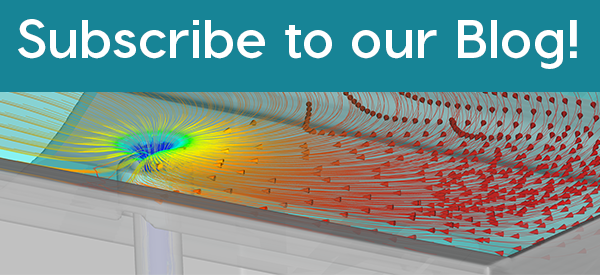Continuing our series of posts dedicated to FLOW-3D ’s new developments, and moving on from the world of particles, I will present the new capabilities that have been added to our mooring lines model.
The mooring line model was first introduced in FLOW-3D v11.1. Using a finite segment approach, the model numerically calculates the full 3D dynamics of the mooring lines and the dynamic coupling between the mooring lines and tethered moving objects. Multiple mooring lines with different physical properties are allowed in one simulation. The mooring lines can be taut or slack and may fully or partially rest on the sea/river bed. Gravity, buoyancy, fluid drag and elastic tension forces are considered to calculate instantaneous motion and shape of the mooring lines. Static equilibrium is assumed for the mooring lines’ initial condition.
The mooring lines model has many engineering applications. One of the most important application is the mooring systems for the offshore oil and gas industry, such as Floating Production Storage and Offloading vessels (FPSOs). The model can also be used to simulate mooring lines for floating Wave Energy Converters (WECs), floating wave breakers, anchored ships and many other moored structures, equipment and devices. Keeping the many applications of mooring lines in mind, our developers continue to add functionality to the mooring lines model.
FLOW-3D’s Mooring Lines Model
In FLOW-3D, new features include predicting breaking of lines, and the ability to simulate the free end dynamics of mooring lines. The minimum breaking load (MBL) is introduced as a new line-specific input parameter, which is the lowest amount of tension force to break the mooring line. At each time step, the maximum tension is calculated for each line and compared with the MBL. If the former exceeds the latter, then the line breaks at the location of the maximum tension. The new mooring lines model also captures the free end dynamics of the mooring lines. A mooring line end can be fixed in space, tethered on a moving object, or completely free. Additionally, mooring line motion can be simulated without moving objects in the simulation. MBL and free end dynamics provide a better and more complete picture to the users in designing mooring systems.
Sample Simulations and Results
Breaking mooring lines
The animation below shows a simulation result of twelve mooring lines in four groups that are anchored to the seabed and tethered to a semi-submersible oil platform that is 78 m x 27 m x 105 m in size and 41800 tons in weight. The mooring lines are SK78 rated with 630 ton MBL and 589 kg/m3 material density. Each line is 485 m long. The incoming wave has a 10 m height and a 100 m length. The undisturbed water depth is 500 m. The computational domain covers 70 m deep water. A free-slip boundary condition is used at the domain’s bottom boundary, which is a reasonable simplification since the wave motion is negligible at the depth equal to half the wavelength. Below the domain, mooring line motion is calculated with negligible water velocity. A wave-absorbing layer is employed at the open boundary at the right side of the domain to reduce reflection of the outgoing wave. In the animation, the platform is constrained by the mooring lines, but can drift by the wave motion. Eventually, the tension forces exceed the MBL and the mooring lines give in.
The second simulation shows a failure of a single point mooring (SPM) buoy system under a severe wave condition. A cargo ship is moored to the SPM buoy that is anchored to the seabed by four mooring lines. A periodic wave, 10 m in height and 100 m in length, pushes the ship downstream causing the mooring lines to stretch and to eventually break, one by one, when the maximum tension force exceeds the minimum breaking load, the lowest tension to break the mooring line.
Modeling dynamic free ends of mooring lines
The last two animations demonstrate the model’s capability to simulate mooring lines with free ends. In the simulations, the rope has one end fixed in space and the other end can freely move. The rope made of material heavier than water is dropped from its horizontal location (left), while the one lighter than water (right) is released from its vertical location. The mooring line motion is affected by gravity, buoyancy as well as drag from the wave motion.
The improved mooring lines model, as seen in the simulations described above, is a powerful tool for calculating the full 3D dynamics of the mooring lines, while capturing the breaking of a mooring line and calculating the dynamics of the broken free end.
In our next blog, I will explore the new interactive geometry creation feature of FLOW-3D, a powerful feature that simplifies the process of adding and editing geometry components.

